- Home
- Antonia Fraser
Royal Charles: Charles II and the Restoration Page 17
Royal Charles: Charles II and the Restoration Read online
Page 17
The King’s day in the Spring Coppice was far from tranquil. Accompanied only by Richard Penderel, he suffered from both hunger and thirst, and he also had the unpleasant experience of observing some troops on the road, evidently searching for fugitives. Only an unexpectedly heavy shower over the copse itself and nowhere else – which the King described as ‘remarkable enough’– saved him from their attentions.
While in the wood however Charles changed his mind about heading for London. Penderel could think of no ‘man of quality’ to harbour him on the way there. Besides, Charles himself knew of several ‘honest gentlemen’ in Wales. So it would be the Welsh ports after all.
Under cover of darkness the King and Penderel left the wood, and, nourished only by some more bread and cheese taken at the door of another Penderel house, set off for the Severn. They encountered several more adventures, including a miller who chased them off, shouting ‘Rogues, rogues!’ – for the ironical reason that he was harbouring a number of fugitive Royalist soldiers. Indeed, the Midlands were still in a state of chaos, with roaming soldiers of both sides, one side gradually picking off the remnants of the other. But as yet no one was quite sure exactly what had happened at Worcester, still less what had happened to the King.
This confusion contributed materially to the King’s preservation. His characteristic lolloping stride, for example, was not exactly that of a labourer. But it was not until 9 September, six days after the battle, that the first proclamation was put about seeking his capture. The day after that the reward was announced for laying hands on this ‘malicious and dangerous traitor’ – one thousand pounds, an absolutely vast sum by the standards of the time, and more than the average workman would earn in a lifetime, an unparalleled fortune to the humble people who were hiding the King. It is one of the heartening facts about the King’s escape that, in spite of all the people in the secret – it has been calculated that they numbered over sixty and ‘so many of them women!’ as a contemporary wonderingly observed – no one ever did claim this reward.6 Nevertheless, once the hunt was officially on for ‘Charles Stuart, son of the late Tyrant’, Charles’ danger was obviously increased. Posters were put out by Parliament seeking ‘a tall black man, over two yards high’. In view of Charles’ exceptional appearance it was lucky that so many of the English had not seen him in the flesh since boyhood, if at all.
The King spent the night of Friday, 5 September, in the barn of an old gentleman named Wolfe at Madeley, about seven miles from Whiteladies. It was then discovered that the plan of crossing the Severn was quite impractical, since a body of militia had installed themselves on the available bridges and were also guarding the boats. Mrs Wolfe’s contribution was to stain the King’s hands and face with walnut juice ‘of a reeky [smoky] colour’. The only solution was to return to the Boscobel area. They had to ford a river on the way back: Charles was a strong swimmer – it was one of the many forms of physical exercise for which he had a passion – but Richard Penderel, who could not swim at all, pronounced it to be ‘a scurvy river’. Charles remembered with pride that at least in this instance he was able to help Penderel by enabling him to cross the river safely.
They got to Boscobel at five o’clock in the morning. The house had taken its name from the Italian, bosco bello, ‘beautiful wood’, and it did indeed lie in a bosky setting, with the Forest of Brewood all about it, as early illustrations show: it had originally been built as a hunting lodge. Today the woods have receded, and the flat Midlands countryside gives a very different impression from that received by the King on the run. Boscobel’s noble past is however omnipresent, from the white stones in the cobbled garden path, commemorating his visit in Latin, to the famous oak, now standing, looking rather lonely, surrounded by a fence in a field about five hundred yards away – its covering forest having vanished long ago.fn5
The first news which greeted the King at Boscobel was about Wilmot: he was safely stowed at Moseley Old Hall. He also learnt that a particularly gallant Royalist soldier, Major Carlis, who had stayed till the end at Worcester (‘had seen the last man killed there’), was at this very moment concealed in the thick Boscobel Wood. The Major knew that his own home nearby would undoubtedly be searched. It was thus that Carlis – or Carlos, as he has gone down to history, having changed his name later to mark his association with his sovereign – found himself in the legendary royal oak, sharing it with King Charles II.
In those days the tree was a large and particularly bushy pollard oak. It still had some space round it, however, which the King decided would give them a good view. Here the pair remained all day, the King sleeping from time to time, with his head in Carlos’ lap, on a cushion provided by the Penderels. As Charles told Pepys, ‘We see the soldiers going up and down, in the thicket of the wood, searching for persons escaped, we seeing them now and then peeping out of the wood.’ According to Hyde’s History, the King also overheard the soldiers discussing what they would do with Charles Stuart when they found him.
It was not until the evening of what must have been another very long day that the King and Carlos dared to leave their home and venture back into the house. Afterwards the Royal Oak became a cult, a symbol of royalty and romance. Medallions issued abroad before the Restoration frequently showed the King’s head on one side and the oak-tree on the obverse. After the Restoration, 29 May, Charles’s birthday, was designated Oak-Apple Day; it remained a public holiday until the 1850s, and late into the nineteenth century was celebrated in parts of England with oak-leaves in the hat and oak boughs, sometimes gilded, over the door.fn6
The existence of a real Royal Oak has tended to obscure the fact that an oak had already long been considered to be a symbol of solid (non-revolutionary) government and establishment. It has been mentioned that in 1638, when Charles was made a Knight of the Garter, the medal struck to commemorate his installation depicted ‘the Royal Oak under a Prince’s Coronet’. A book published in 1649 (two years before the Boscobel escapade), The History of Independency, had an engraving as its preface, showing ‘The Royal Oak of Britain’, cut down by Cromwell. Another Royalist engraving of the same period shows the Royal Oak overturned, plus the prophecy ‘that it will sprout again’. The happy coincidence of this symbol and the King’s picturesque sojourn made it an easy step from here to the fertile quercine fancies of the post-Restoration years. The King prepared himself for them in exile by toying with the idea of an order of Knights of the Royal Oak.
It was at supper that night at Boscobel House that the King first heard from Humphrey Penderel of the price on his head – ‘If it were one hundred thousand pounds, it were to no more purpose,’ exclaimed the gallant Carlos instantly, and added that he would engage his soul for the reliability of all present. And it was on that same occasion that the King demonstrated how far he himself was out of touch with his putative subjects. Without thinking, he asked if he could have mutton for his supper. The Penderels had not actually tasted butcher’s meat since the christening of their eldest child: it would have attracted far too much attention to have placed a sudden lavish order. So it was left to Carlos, who, with his usual resource, went out and stuck his own dagger into a neighbour’s lamb. At least the King and Carlos both took a hand in cooking the collops: Charles ate heartily and asked ‘merrily’ afterwards who was the better cook, himself or his companion.
Yet the mutton incident was important. Like another monarch thrown out into the cold, King Lear, Charles was being forcibly exposed to ‘what wretches feel’. He had not even been shaved by a barber before, as he told William Penderel when he cut his hair. Chafing shoes, the total inability to provide a food which he had taken utterly for granted (remember the meat provided for his coronation at Scone), had their lessons for him. He had no choice but to ‘take physic, pomp’.
The night at Boscobel was spent in a priest’s hiding-place at the top of the house. Still to be inspected, if not precisely in the same seventeenth-century form, the hole is sufficiently cramped for someone of n
ormal stature to remind one vividly how Charles was being handicapped by his height. The following day, Sunday, 7 September, was pleasanter: the King spent some of it in the garden, reading in an arbour placed on a curious ancient mound there; but although he commented favourably on the house’s ‘retiredness’, it was obviously impossible for him to rest there long. The risk of a house search only increased as the hours passed.
Charles was passed on to Moseley Old Hall, about five miles away. On his way he complained about the quality of his horse – another rude shock to one whose governor had been the great Lord Newcastle – calling it the ‘heaviest dull jade’ he had ever ridden on.
‘My liege,’ Humphrey Penderel exclaimed brightly, ‘can you blame the horse to go heavily, when he has the weight of three kingdoms on his back?’ There had been three Penderels with the King on this occasion; when the time came for them to separate, the Penderels’ duty done, the King suddenly realized that in the general need for security he had omitted to thank them properly. He called them back and said graciously, ‘My troubles make me forget myself; I thank you all.’
Once at Moseley, Charles was reunited with Wilmot, who was able to introduce him with a suitable flourish, greasy clothes notwithstanding, as ‘your master, mine, and the master of us all’. Charles’ ‘exotic’ dress had so ‘metamorphasised’ him that Wilmot would otherwise scarcely have known who he was. The King was fed. Whitgreave washed his cruelly blistered feet (Charles had stuffed the offending shoes with paper, which only made matters worse). A ‘bloody clout’ or handkerchief, with which he had staunched a nose-bleed, was carefully preserved by Father Huddleston as a relic, although Charles had made nothing of the bleeding at the time, describing such things as ‘habitual to him’. After that, Charles was cheerful or gallant enough to announce that he was ready for another march, another fight.
But his fate was not to be so public. Moseley, built in about 1600, then lay amidst its own remote agricultural estate (the conurbation of Wolverhampton has since crept up, although Moseley is still an agreeable place of historical pilgrimage). Thomas Whitgreave was a lawyer, who had fought at Naseby; he was evidently a prudent fellow, for he instantly sent away all the non-Catholics from the house. At the Restoration, in her humble petition, one Elizabeth Smith, a Catholic, referred to herself as the only servant left in the house, who had in consequence looked after both the King’s fire and his bed. And when Cromwell’s soldiers were in the town, ‘Your Majesty’s petitioner rubbed softly Your Majesty upon the feet and legs, to wake Your Majesty and warn….’ She also reminded the King that she had put sweet herbs in his privy.9
The upstairs bedroom, where the King was installed, had its own convenient hiding-place nearby; it was rather better situated than most, between two rooms and having a false floor with an exit door to the brew-house chimney. ‘The hole’, as Blount calls it, contained a pallet. The usual incumbent of this nook, Father John Huddleston, now enters King Charles’ story properly for the first time. Coming from a Lancashire family, and having served in the Royalist Army during the Civil War, Huddleston represented in his own person all that was best about that kind of patriotic English Catholicism which Charles was just discovering for himself.
Huddleston was outspoken, saying that the King now resembled him, being ‘liable to dangers and perils’.10 He had already shown Charles the secret chapel, ‘little but neat and decent’. Charles looked on it, crucifix, candlesticks and all, respectfully. He then observed, according to Huddleston, ‘If it please God, I come to my crown, both you and all of your persuasion shall have as much liberty as any of my subjects.’ There is no reason to doubt Huddleston’s story: Charles’ generous intention to right a wrong was certainly always there once he had encountered the sufferings – and the loyalty – of the English Catholics.
Significant also was Charles’ conversation with Huddleston on the subject of the Catholic Faith (as opposed to the problems of the recusants). Charles was encouraged to look at a Catholic catechism, probably Turbevill’s Catechism printed at Douai, and a tract called ‘A Short and Plain Way to the Faith and the Church’ by Father Huddleston’s uncle, a Benedictine monk. He described the catechism as a ‘pretty book’ and took it away with him. Of the tract, according to Huddleston, Charles spoke the memorable words: ‘I have not seen anything more plain and clear upon this subject. The arguments here drawn from succession are so conclusive, I do not see how they can be denied.’ This exchange has sometimes been cited as evidence of Charles’ early conversion to Catholicism – ignoring the public stand he kept up against it in exile. In the context, it is more plausibly regarded as evidence of Charles’ natural curiosity, coupled with politeness. He had certainly never studied the Catholic arguments before – why should he? Apart from his personal admiration for Huddleston, perhaps he was amazed to find the faith of his mother quite so reasonable.
No refuge, it was understood, would remain a safe house for very long. Besides, the net was closing in. On the Monday Boscobel was searched. The Penderels had their remaining provisions confiscated by the troops. At least Carlos escaped – it was he who would give Mary, the Princes of Orange, the first news of her brother’s safety. The next day, 9 September, the date of the first government proclamation, Whiteladies was also searched. A cornet in Cheshire had given away the secret of the King’s presence in the area. Giffard was badly man-handled, but kept his head admirably; he did not attempt to deny the visit of ‘some unknown Cavaliers’, but said that he had absolutely no idea whether the King had been amongst them.
That evening the danger was even more acute when a party of soldiers actually came to Moseley itself. The King was bundled into ‘the hole’. But Whitgreave too showed aplomb. He convinced them that his own ill-health had prevented him being involved in any of the recent Royalist dramas at Worcester and elsewhere. And the soldiers went on their way.
The next day the King and Wilmot departed for Bentley Hall, the home of a Colonel Lane. The fugitives’ desperate need was for some convincing cover story to explain their journeyings in a part of the world daily combed by inquisitive soldiery. It was discovered that Colonel Lane’s daughter, Jane, was due to visit her sister, Mrs Norton, at Abbot’s Leigh, for the birth of the latter’s impending child. If Charles went in Jane Lane’s company as a servant, he might conceivably get clean away.
Bentley lay three miles outside Walsall. Here Charles was transformed, from his somewhat improbable disguise as a woodman, up the social scale to being a servant. He was to be William Jackson, son of a neighbouring tenant, which was slightly more plausible than his previous manifestation – though only just, his gait and demeanour remaining unconvincing in either role. Besides, he did not even know how to ride on a double horse, as he was expected to do while in attendance on Jane Lane, let alone doff his hat with proper subservience.
But the little train duly clattered off on Wednesday morning (Charles used the wrong hand to hand Jane Lane up to her horse). It was on this occasion that Wilmot condescended to disguise himself with a hawk on his wrist. Otherwise they none of them presented a very romantic sight. Jane Lane’s portrait shows her to have had a full figure and a plump face, comfortable English looks rather than glamorous ones. Like another Stuart saviour, Flora Macdonald, Jane Lane possessed character and intelligence rather than haunting beauty – preferable qualities under the circumstances, except for yearners after romantic fiction.
En route between Bentley and Abbot’s Leigh, Jane Lane’s horse lost a shoefn7 and it was Charles’ duty to oversee its replacement. At this point the King discovered another fact for himself: the passionate loyalty of his Catholic adherents did not extend throughout England.
With characteristic bravado, Charles chatted freely to the smith as he worked, asking him, ‘What news?’
‘There is no news, except the good news of beating those rogues the Scots,’ replied the smith. This gave Charles the irresistible opportunity of asking if ‘that rogue Charles Stuart’ had been captured, who de
served to be hanged more than all the Scots for bringing them in. ‘Spoken like an honest man,’ said the smith. This too was a salutary experience.
Somewhere near Stratford the party ran into a troop of horse. Charles was all for proceeding fearlessly, as being the best defence, but Jane Lane’s brother-in-law had had previous experience of being beaten up by these roaming bands, and insisted on a detour. The King discovered how the spirits of his loyal subjects had been worn down.
At Long Marston, further on the road to Abbot’s Leigh, Charles was set by the cook to wind up the jack for roasting the meat in the fireplace. He did it clumsily, but at least he demonstrated what he had learnt at the Penderels: he explained that, being a poor tenant’s son, he seldom ate meat or used a jack.
Abbot’s Leigh, which was reached on Friday, 12 September, lay three miles beyond Bristol, and the city had to be traversed to get there – a real hazard. Jane Lane decided not even to reveal Charles’ true identity to the Nortons; she concocted a story about her servant recovering from fever and needing to be left to himself. Charles told Pepys that the tale gained plausibility from the fact that his various ordeals (including the lack of meat) had left him looking pale.
At Abbot’s Leigh the mixture of farce and danger which characterized the King’s escape continued. In the buttery Charles heard himself minutely described – except that the missing King was authoritatively pronounced to be ‘three fingers’ taller than the present Will Jackson. But when Charles discovered that one of the talkers had been in his regiment of guards, he beat a hasty retreat upstairs. He was infinitely more afraid of the fellow, now he knew him to be one of his own men, than when he had believed him to be an enemy.

 Warrior Queens
Warrior Queens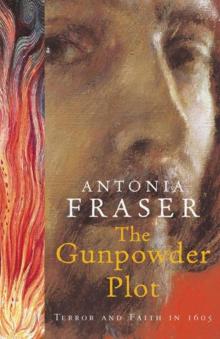 The Gunpowder Plot
The Gunpowder Plot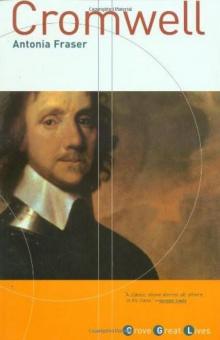 Cromwell
Cromwell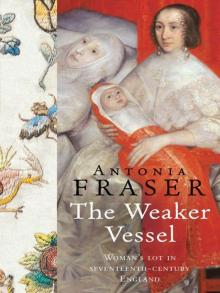 The Weaker Vessel: Women's Lot in Seventeenth-Century England
The Weaker Vessel: Women's Lot in Seventeenth-Century England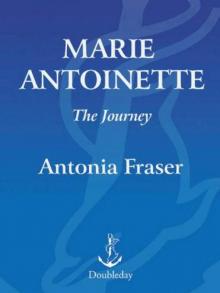 Marie Antoinette: The Journey
Marie Antoinette: The Journey Oxford Blood
Oxford Blood Your Royal Hostage
Your Royal Hostage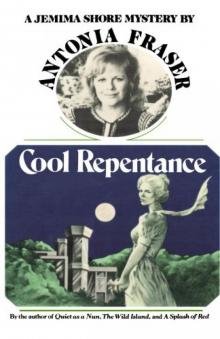 Cool Repentance
Cool Repentance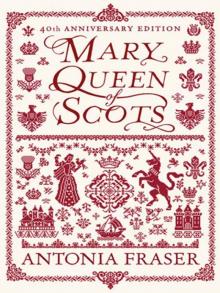 Mary Queen of Scots
Mary Queen of Scots Political Death
Political Death Royal Charles: Charles II and the Restoration
Royal Charles: Charles II and the Restoration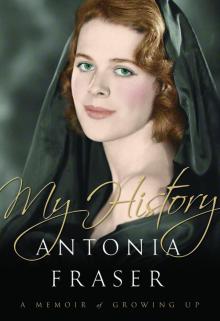 My History: A Memoir of Growing Up
My History: A Memoir of Growing Up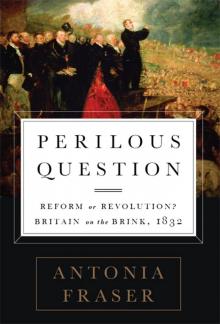 Perilous Question: Reform or Revolution? Britain on the Brink, 1832
Perilous Question: Reform or Revolution? Britain on the Brink, 1832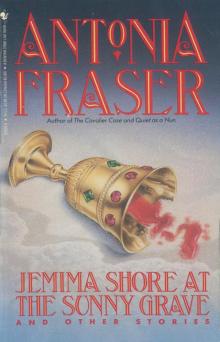 Jemima Shore at the Sunny Grave
Jemima Shore at the Sunny Grave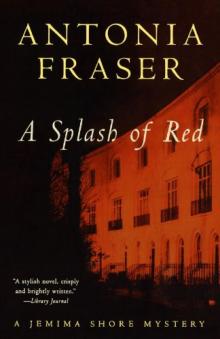 A Splash of Red
A Splash of Red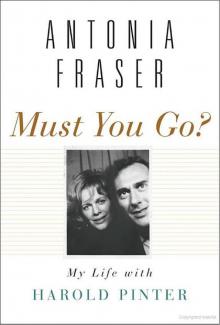 Must You Go?: My Life With Harold Pinter
Must You Go?: My Life With Harold Pinter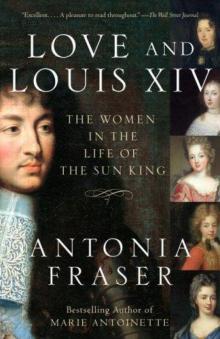 Love and Louis XIV: The Women in the Life of the Sun King
Love and Louis XIV: The Women in the Life of the Sun King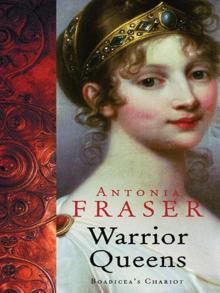 The Warrior Queens
The Warrior Queens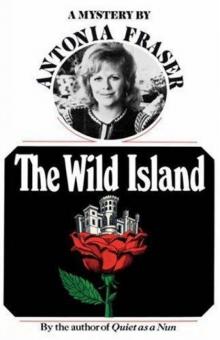 The Wild Island
The Wild Island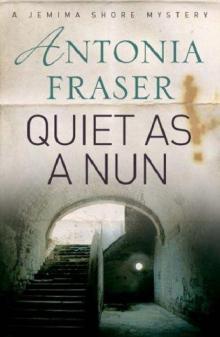 Quiet as a Nun
Quiet as a Nun Perilous Question
Perilous Question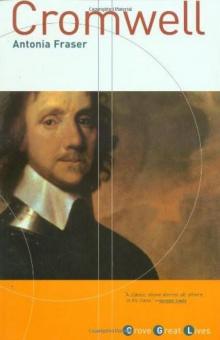 Cromwell, the Lord Protector
Cromwell, the Lord Protector Gunpowder Plots
Gunpowder Plots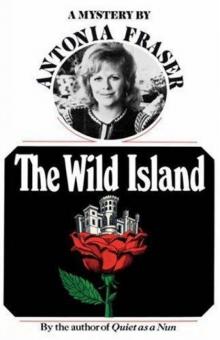 The Wild Island - Jemima Shore 02
The Wild Island - Jemima Shore 02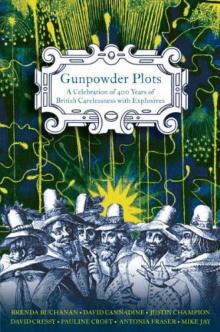 Gunpowder Plots: A Celebration of 400 Years of Bonfire Night
Gunpowder Plots: A Celebration of 400 Years of Bonfire Night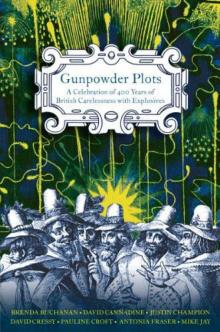 Gunpowder Plots_A Celebration of 400 Years of Bonfire Night
Gunpowder Plots_A Celebration of 400 Years of Bonfire Night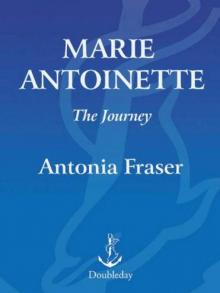 Marie Antoinette
Marie Antoinette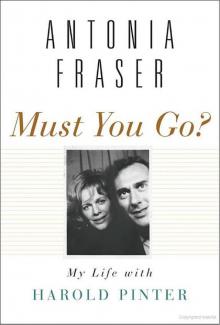 Must You Go?
Must You Go?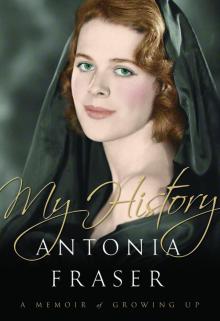 My History
My History